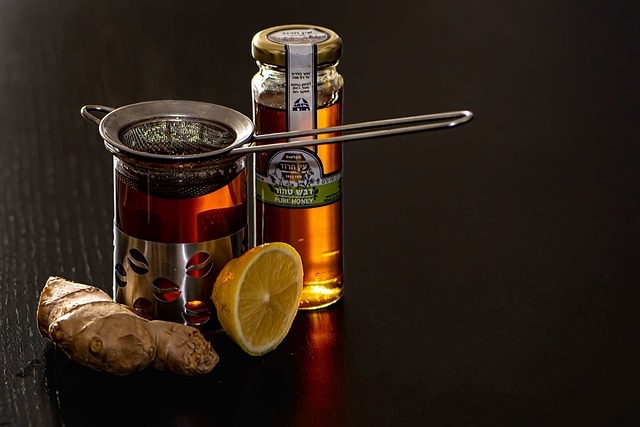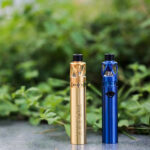Struggling with a dry cough from vaping isn’t just uncomfortable – it’s a nuisance that disrupts your experience. Ready for relief? This article directly tackles your concern, offering a compilation of the most effective strategies on how to get rid of dry cough from vaping. From uncovering the causes to tweaking your vaping setup and embracing soothing remedies, we’ve condensed essential knowledge to help you breathe easily and vape smoothly.
Key Takeaways
- Identifying the specific causes of a dry cough from vaping, such as high levels of nicotine or propylene glycol (PG), improper inhaling techniques, and poor-quality vape juice, is essential for finding appropriate solutions.
- Maintaining proper hydration is crucial when vaping, as ingredients in vape juices can dehydrate the throat, leading to dry coughs. It is also recommended to avoid dehydrating substances like caffeine and alcohol, and instead, consume water-rich food.
- To reduce coughing, adjustments to the vaping setup can be beneficial, including the use of high vegetable glycerin (VG) e-liquids, lower-powered devices, proper device maintenance, and optimizing device settings like wattage and airflow.
Pinpointing the Culprit: Identifying the Cause of Your Vaping Cough

On your vaping journey, encountering a persistent cough can turn an otherwise enjoyable activity into a distressing experience. To remedy this issue, it’s crucial to identify the underlying cause of the cough. Excessive nicotine or propylene glycol (PG) content in vape juice, one’s specific technique while vaping, and the caliber of the vape juice itself could all be contributing factors to experiencing a dry cough associated with vaping.
The Role of Propylene Glycol (PG) in Dry Cough
Propylene glycol (PG), often found in e-liquids, plays a dual role by delivering both flavor and that sought-after throat hit during vaping sessions. It can also strip moisture from the sensitive skin within the throat causing irritation that may prompt coughing. This effect is heightened at greater concentrations of propylene glycol pg, particularly for individuals who have an intolerance or sensitivity to this compound.
Nicotine Strength and Its Impact on Throat Sensation
The concentration of nicotine in vape juice is a key factor that can contribute to the development of a cough while vaping. When high levels of nicotine are vaped, especially with larger devices, they may cause throat irritation which often leads to coughing. For individuals who have just started vaping or are moving away from smoking cigarettes, the pronounced ‘throat hit’ associated with elevated nicotine concentrations can be unpleasant and lead to continuous coughing.
To alleviate this issue:
- Opt for e-liquids that contain lower strengths of freebase nicotine.
- Take time to slowly acclimate oneself to higher amounts of nicotine as tolerance increases.
- Consider switching to e liquids formulated with nicotine salts for their ability to provide a milder impact on the throat which might help lessen instances of coughing during use.
Mastering the Art of Inhaling
Another cause that may provoke coughing is the manner in which one inhales. Newcomers to vaping should consider taking a soft drag, keeping the vapor in their mouth momentarily before drawing it into their lungs, and then exhaling gently to circumvent coughing fits. Engaging in chain-vaping or employing forceful, elongated drags can aggravate the throat and result in coughing.
Modifying how quickly you inhale and release breath, opting for brief inhalations when using potent e-liquids, as well as fine-tuning airflow configurations are all strategies that can assist individuals in mastering a cough-free vaping experience.
Hydration is Key: Combating Dry Throat from Vaping

Vaping may result in a dry cough that can signal dehydration. The dehydrating properties of certain vape juice constituents, such as propylene glycol (PG) and vegetable glycerin (VG), underscore the importance of maintaining hydration to avoid throat irritation that could lead to coughing.
The dehydration caused by vaping can produce symptoms like a parched mouth, cracked lips, and an irritated sore throat. These issues not only contribute to but may also exacerbate conditions like vape cough or persistent chronic coughs.
Drink Up for Vape Health
To stave off dehydration, which can cause a dry mouth or chapped lips signaling inadequate hydration, it’s advised to:
- Increase water intake before, throughout, and following vaping sessions
- Doing so can also help reduce coughing due to a lack of moisture in the throat.
For those who find plain water unappealing, staying hydrated could be made more pleasant by opting for alternatives such as herbal teas, soups with a broth base or even water enhanced with flavorful infusions from fruits, vegetables or herbs.
Substances to Sidestep
It is essential to not only maintain hydration, but also steer clear of beverages like alcohol and caffeine that may intensify the dryness in your throat and aggravate cough intensity. Vapers should particularly refrain from indulging excessively in such drinks. To combat vaping-induced dry throat, incorporating fruits and vegetables with high water content, such as carrots, grapes, and apples, into one’s diet can be beneficial for keeping hydrated.
Adjusting Your Vape Setup

The vaping experience is heavily influenced by your vape setup, and tweaking it can greatly minimize the occurrence of coughing. This may involve:
- Opting for an appropriate e-liquid
- Transitioning to a device with lower power to decrease vapor output
- Preferring reputable vape brands for superior quality equipment
Choosing the Right E-Liquid
Selecting the appropriate e-liquid can have a significant impact on reducing coughing occurrences. To lessen the chances of an irritated throat, consider these guidelines:
- Select e-liquids that are rich in vegetable glycerin (VG) as they tend to be gentler and cause less irritation than those with higher levels of propylene glycol (PG).
- For a more comfortable vaping experience with high-strength liquids, you might want to try nicotine salts.
- Stick to milder flavors such as tobacco or menthol which are typically easier on the throat and less likely to induce coughing.
It’s helpful to steer clear of any e-fluids comprised of aggressive chemicals or sweeteners known for their potential throat-aggravating properties. Tailoring the proportion between PG and VG towards a higher concentration of VG may result in a softer sensation upon inhalation and reduce your likelihood of coughing during use.
Optimal Device Settings for Smoother Vaping
Adjusting the settings on your vaping device is key to reducing coughing. By opting for lower wattage, you’ll decrease both coil heat and vapor output, which in turn minimizes coughing risks. Fine tuning your device’s airflow can also be significant by ensuring the vapor isn’t too hot as it could irritate your throat and lead to coughs.
For vape newcomers, it’s advisable to start with a restricted airflow and then gradually increase it. This helps acclimate the throat to inhaling vapor while diminishing chances of irritation-induced coughs. When using high PG e-liquids that often result in an intense throat hit, choosing higher resistance coils combined with low power settings aids not just in mitigating the harshness but also prevents leaks due to faster wicking processes.
When to Replace Vaping Components
Caring for your vaping device is just as essential as selecting the proper e-liquid or adjusting the appropriate settings on your device. To avoid inhaling charred components which can lead to throat irritation and coughing, it’s important to change out the coil with some regularity. Indications that a coil may need swapping include experiencing:
- a burnt flavor
- an unusual taste of your e-liquid
- decreased clarity in vapor production
- noises resembling gurgling or instances of leakage from your e-cigarette
These signs suggest potential problems with the coil that might necessitate checking and possibly changing.
Depending on how frequently you vape, the lifespan of a coil will differ. There’s a common guideline suggesting coils should be replaced approximately once each month to ensure consistently high standards for your vaping experience.
Remedies and Relief for Vapers’ Cough

Should you be suffering from a dry cough as a result of vaping, there are multiple remedies and ways to alleviate the discomfort. You can try rinsing with warm saltwater, ensure that you get plenty of rest, and consider using over-the-counter treatments such as throat lozenges, sprays, or ibuprofen for relief of symptoms.
Soothing Sips and Gargles
Drinking herbal teas such as licorice, marshmallow root, slippery elm, and peppermint can be particularly beneficial for alleviating a sore throat caused by vaping. These teas are known for their anti-inflammatory properties and ability to reduce pain, thus providing relief to the irritated tissues of a sore throat. Consuming warm drinks coupled with ensuring sufficient hydration levels can mitigate the irritation experienced from a vape-induced sore throat.
Employing the traditional method of gargling with warm saltwater can also aid in treating a sore throat. This remedy works well alongside sipping on herbal teas and keeping oneself well-hydrated.
Over-the-Counter Options
OTC remedies can offer prompt relief for a cough and sore throat. Hard candies and lozenges are particularly helpful for those who vape, as they moisten the throat and give short-term comfort to dryness. Natural components like peppermint or sprays with a cooling effect from menthol can help ease symptoms of a sore throat, although their effectiveness might differ based on the severity of the condition and personal sensitivity.
It’s critical to follow usage instructions closely. Should any negative reactions arise, discontinue use immediately and seek advice from a medical expert.
Lifestyle Adjustments for a Better Vaping Experience

Besides the tips previously mentioned, making certain changes to your daily habits can greatly improve your vaping experience and help you avoid a dry cough. Engaging in consistent physical activity can strengthen lung function and capacity, which may lead to less frequent and less intense coughing episodes during vaping sessions.
Taking care to vape more slowly and ensuring that e-juice levels are checked consistently will Reduce the chances of experiencing a cough while vaping.
Exercise and Respiratory Health
Partaking in physical activity bolsters the vitality of the heart and lungs, which can lead to enhanced oxygen distribution throughout the body and diminish episodes of breathlessness. By strengthening muscles around the neck and chest area—particularly those involving the diaphragm and intercostal muscles—the process by which air is drawn into and expelled from our lungs becomes more efficient. Engaging regularly in both cardio workouts as well as exercises aimed at strengthening these vital muscle groups can significantly boost lung capacity through bolstered core endurance and increased tone of respiratory muscles.
Specialized breathing techniques that concentrate on empowering the diaphragm could instruct individuals on how to achieve deeper respiration patterns that are more effective while potentially curbing coughing associated with vaping practices. Committing oneself to conform with recommended exercise protocols—which entail 150 minutes per week or thirty minutes a day for five days each week performing moderate-intensity activities—not only supports better lung health, but also confers additional benefits tied to improved pulmonary capabilities.
Creating an Ideal Vaping Environment
Creating an environment with clean air, free from pollutants and allergens, can contribute to a better vaping experience. Here are some tips to help maintain a clean and healthy environment for vaping:
- Use a clean humidifier or cool mist vaporizer to maintain appropriate humidity levels and prevent throat dryness from vaping.
- Avoid irritants like smoke and chemical fumes, as they can irritate the throat.
- Use an air humidifier to alleviate throat irritation and keep the air moist.
By following these tips, you can create a comfortable and enjoyable vaping environment.
Transition Techniques for Recent Quitters
Switching from traditional smoking to using e-cigarettes can lead to a period where coughing is more frequent, as the body adjusts from the inhalation of tobacco smoke to vaporized e-liquid. Many attribute this increase in coughing during the transition phase to their lungs expelling built-up tar and phlegm associated with past smoking habits, leading them to remark that “vaping makes me cough.”
Understanding the Transition Period
As individuals transition from smoking to vaping, they might experience a sore throat while their body expels tar and regenerates tissue during the healing process. Sore throats are common withdrawal symptoms that intensify in the initial days after quitting smoking but tend to subside within one month.
Each person’s adaptation period when switching from cigarettes to vaping can differ, with some making the switch more quickly than others. Vaping mimics the hand-to-mouth ritual and offers a “throat hit” similar to what smokers are accustomed to, which delivers an authentic smoking sensation that helps new vapers ease into this change comfortably.
Gradual Adjustment Strategies
For those transitioning from smoking cigarettes to vaping as a means to quit smoking, there are several methods that can facilitate this change. Engaging in frequent vaping sessions may help control the urges and minimize withdrawal effects. New vapers might find mouth-to-lung (MTL) inhalation more comfortable and less likely to induce coughing, particularly when using e-liquids with higher concentrations of nicotine.
Alternatively, one could explore using e-liquids containing Nicotine Salts (nic salts), or experiment with Direct-to-Lung (DTL) inhaling techniques at reduced levels of nicotine strength for a smoother experience that is less harsh on the throat. To ease into vaping without persistent coughing issues, gradually lowering the nicotine content in your e-liquid combined with setting personal guidelines for when and where you vape can offer additional support during the shift away from traditional cigarette use.
A Deeper Dive into Vaping Devices and Techniques
Comprehending the various vaping devices and mastering the correct usage methods can significantly enhance your vaping experience while also aiding in averting a dry cough. Opting for an appropriate device and utilizing it accurately are critical factors that contribute to improving your overall vape enjoyment.
Vape Pens vs. Mods: Pros and Cons for Cough Prevention
Vape pens and vape mods each present unique vaping experiences, which can influence the likelihood of experiencing a cough. Vape pens are often chosen for their ease-of-use and portability, providing an easy-to-manage alternative for those who wish to minimize coughing during use. Due to their lower power settings and reduced vapor output, they are especially fitting for new users or individuals prone to coughing.
Conversely, vape mods – also referred to as sub-ohm mods – cater specifically to e liquids with more vegetable glycerin content thanks to their larger inlet holes intended for denser fluids. This design choice helps mitigate the possibility of dry hits that lead some thinner liquid users towards coughs. Direct-lung styled vape pens are tailored towards milder nicotine concentrations. This may contribute to the problem. In reducing instances of coughing commonly tied with high levels of nicotine found in various e liquids.
Mouth to Lung vs. Direct to Lung Vaping
Drawing vapor into the mouth before inhaling it to the lungs, a method known as Mouth to Lung (MTL) vaping, mimics traditional cigarette smoking and typically results in less vapor production. Consequently, this technique is less likely to cause coughing compared with methods that create more vapor.
Conversely, Direct to Lung (DTL) vaping involves taking large amounts of vapor straight into the lungs using high-power devices and can be preferred by those accustomed to vaping. DTL can often induce coughing due to its intensity, especially for new vapers or individuals who have only recently made the switch from conventional smoking.
Struggling with that pesky vape cough? Don’t let it get you down! We’ve got tips to help you conquer it and get back to enjoying your favorite Eightvape flavors. Check out our guide and snag some exclusive Eightvape coupons to sweeten the deal.
Summary
We trust that this guide has offered beneficial knowledge to improve your vaping experience by shedding light on typical reasons for a vaping cough and presenting solutions to alleviate it. It’s important to note that the secret of an enjoyable vaping journey hinges on recognizing how your body reacts, choosing appropriate e-liquids and apparatuses, as well as implementing adjustments required to curb coughing episodes. Wishing you delightful vaping!
Frequently Asked Questions
How do you heal your lungs from vaping?
In order to recover from lung damage caused by vaping, you may require interventions that include corticosteroids for mitigating inflammation, as well as supportive measures like the provision of extra oxygen. Pharmaceuticals such as antibiotics and antiviral agents could be necessary.
It is advisable to obtain professional medical advice in order to identify the most effective treatment strategy.
What is the fastest way to stop a dry cough?
To swiftly halt a dry cough, ensure you consume adequate fluids to maintain hydration, alleviate throat irritation with honey or lozenges, and utilize a humidifier to increase the moisture levels in your surroundings.
Applying these techniques can offer prompt relief from the discomfort of a dry cough.
What causes a cough when vaping?
When experiencing coughing during vaping, it’s essential to look into various elements that might be the cause, including the propylene glycol (PG) ratio in vape juice, how you vape (your vaping technique), the nicotine concentration within your e-liquid, or even the quality of the vape juice itself. Addressing these aspects is crucial for resolving this issue.
How does propylene glycol (PG) cause a dry cough?
Individuals sensitive to PG and exposed to higher concentrations can experience throat dryness from propylene glycol, resulting in irritation and inducing coughing.
How does nicotine strength impact coughing?
Elevated levels of nicotine can cause throat irritation and induce coughing, particularly for individuals who are new to vaping or transitioning from smoking.
Opting for options with less nicotine is recommended in order to alleviate the discomfort and continuous cough that may result.





